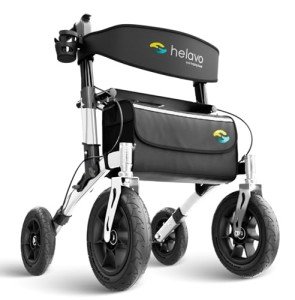This History Behind Shopping Walker Can Haunt You Forever!
The Rise of Shopping Walkers: A New Trend in Retail
In an ever-evolving retail landscape, a remarkable brand-new pattern has actually emerged: shopping walkers. This innovative idea has changed the method individuals store, offering an unique blend of workout and shopping. As metropolitan areas become more built-up and busy, shopping walkers provide an efficient solution for multitasking— combining shopping with the health advantages of walking. This blog post dives into what shopping walkers are, their numerous advantages, and some essential pointers for getting the most out of the experience.
- * *
What Are Shopping Walkers?
Shopping walkers are basically people who integrate shopping into their walking routines. Senior Walker browse shopping districts, shopping centers, and regional markets on foot, utilizing their time efficiently while promoting a healthy lifestyle. With the rise of e-commerce, many buyers find themselves yearning for the immersive experience of standard shopping however coupled with the benefits of physical activity.
Why Choose to Become a Shopping Walker?
The factors for accepting the shopping walker way of life are various. Below are a few of the crucial inspirations:
Motivation
Description
Health Benefits
Walking frequently enhances cardiovascular health, boosts mood, and help in weight management.
Conserves Time
Multi-tasking allows customers to accomplish multiple goals at once, making errands more efficient.
Conscious Shopping
Walking can supply a more thoughtful perspective, encouraging consumers to consider their purchases thoroughly.
Neighborhood Engagement
Walking through communities promotes a connection to regional organizations and efforts.
Sustainability
Shopping in your area typically motivates sustainable practices, decreasing dependence on mass-produced items and long shipping ranges.
- * *
The Benefits of Shopping Walkers
There are numerous benefits to embracing the shopping walker way of life, consisting of physical, psychological, and ecological incentives. Below are a few of the primary benefits:
Enhanced Physical Well-Being
- Walking boosts cardiovascular health.
- Add to weight management.
- Enhances general endurance and physical fitness.
Mental Clarity and Stress Reduction
- Exercise releases endorphins, causing improved mood.
- Walking can serve as a form of meditation, promoting mindfulness.
Financial Savings
- Walking minimizes transport costs.
- Favoring regional stores can lead to discovering sales and special products, often less expensive than online options.
Neighborhood Support
- Shopping in your area enhances local economies and promotes neighborhood bonds.
- Engaging with store owners can result in more personalized shopping experiences.
Environmental Impact
- Lowering transportation relies less on fossil fuels, adding to lower carbon emissions.
- Supports sustainable business practices by favoring ecologically friendly merchants.
- * *
How to Maximize Your Shopping Walker Experience
Transforming into a shopping walker requires some planning and preparation. Here are some essential pointers to begin:
1. Select the Right Footwear
- Convenience is Key: Invest in high-quality walking shoes to prevent discomfort.
- Weather condition Considerations: Choose shoes appropriate for the conditions, whether rain or shine.
2. Plan Your Route
- Interactive Maps: Use apps like Google Maps to browse and find brand-new shopping lanes.
- Mix Routes: Look for routes that incorporate parks or lovely districts for a picturesque walk.
3. Set a Shopping List
- Focus on Needs: Create a list of needed products to prevent impulse buying.
- Budgeting: Plan a realistic budget plan to prevent overspending while delighting in the experience.
4. Incorporate Breaks
- Stay Hydrated: Bring along water to remain refreshed during longer walks.
- Light Snacks: Healthy treats can give you a much-needed energy increase.
5. Engage with the Community
- Support Local Businesses: Strike up conversations with store owners— numerous can offer valuable and individualized recommendations.
Join Events: Participate in local farmer's markets or neighborhood events to enhance connections.
- *
Frequently Asked Questions (FAQ)
Q1: Do I need to stick to standard shopping hours?
A1: Not necessarily! Many cities have stores open later into the night, and some markets run on weekends. Explore your area to discover the very best hours for shopping.
Q2: Can shopping walking be done in colder climates?
A2: Absolutely! Dress in layers and go with waterproof shoes when needed. Your regional area may also have actually covered markets to keep you warm while you shop.
Q3: What if I have mobility issues?
A3: Shopping walking can be adapted to suit everyone's pace and ability. Think about checking out close-by shops while utilizing mobility aids or walking with a friend for support.
Q4: What are some excellent locations for shopping walkers?
A4: Look for outdoor shopping districts, farmer's markets, or scenic areas. Locations with a mix of regional shops, parks, and community spaces can supply an enjoyable walking experience.
Q5: How can I monitor my development?
A5: Many physical fitness apps and gadgets can monitor your walking distance and calories burned. Alternatively, think about an easy journal to log your shopping journeys and experiences.
- * *
As consumers significantly look for methods to integrate healthy habits into their everyday activities, shopping walkers present a sustainable and satisfying solution. By blending regular errands with workout, individuals can support their bodies, boost their spirits, and support local economies. Whether walking through vibrant markets or window shopping in a dynamic downtown, shopping walkers are setting a new criteria for a holistic shopping experience. So, lace up your walking shoes, get your carry bag, and accept the wonderful transformation of shopping walking today!
